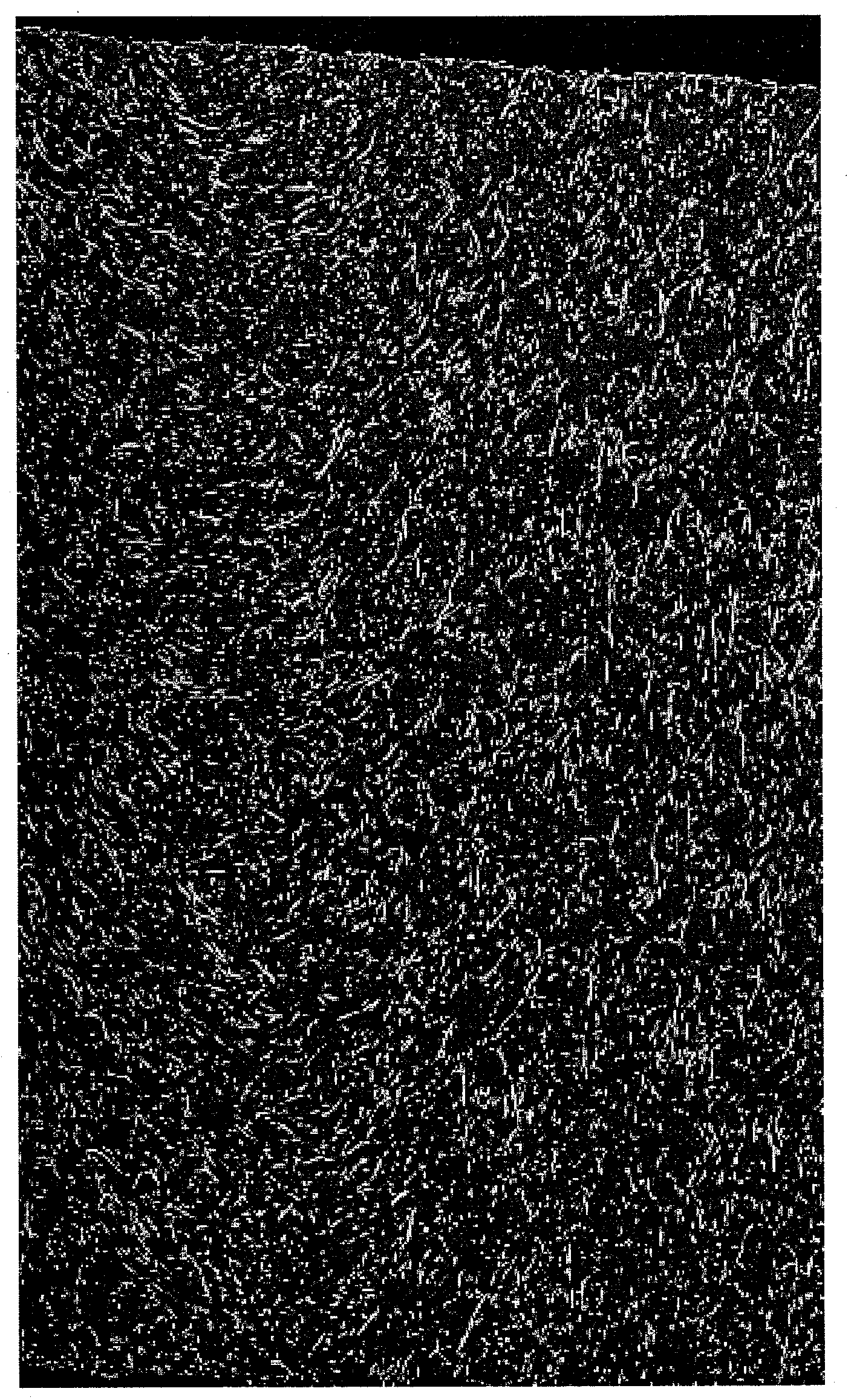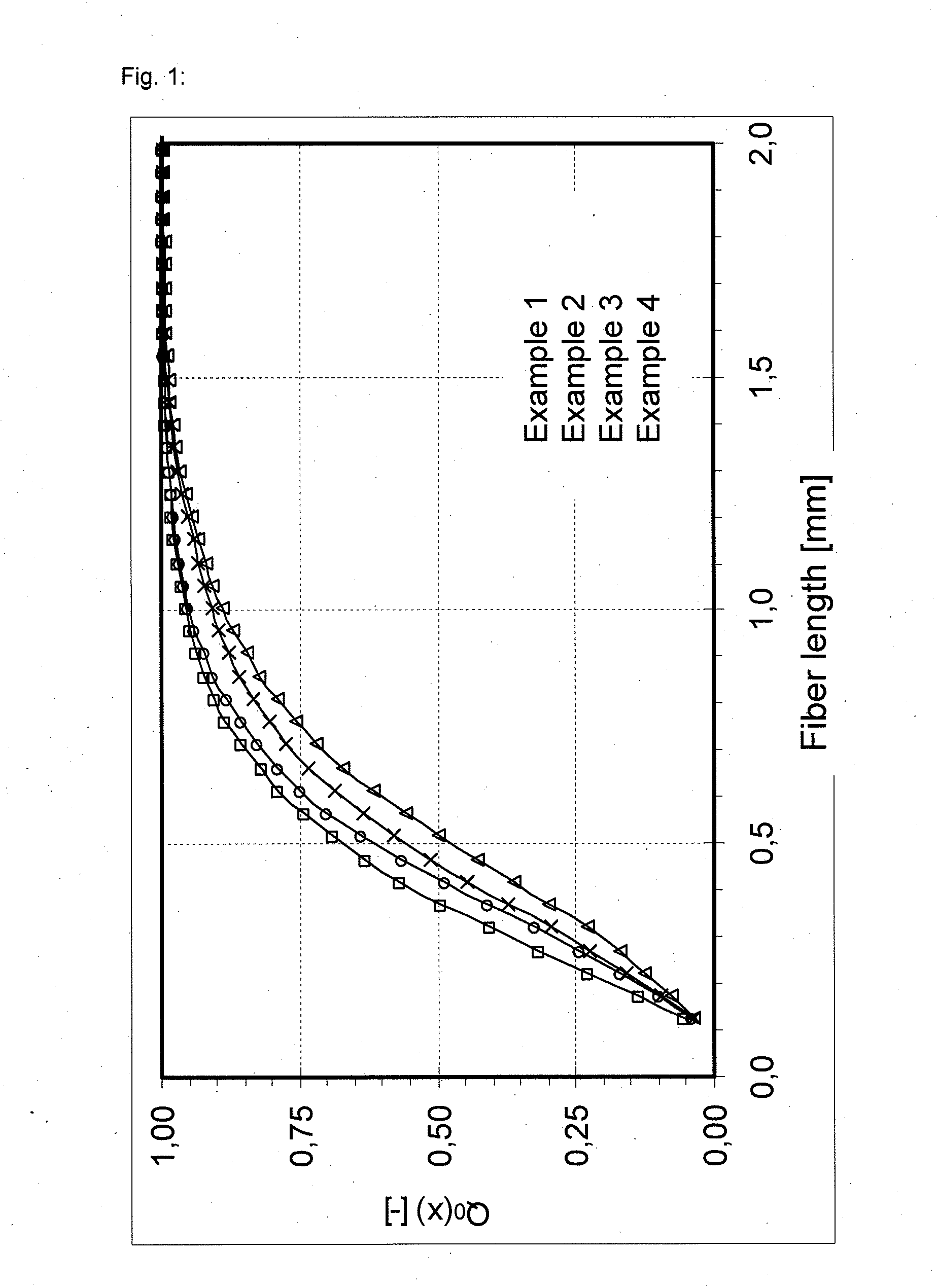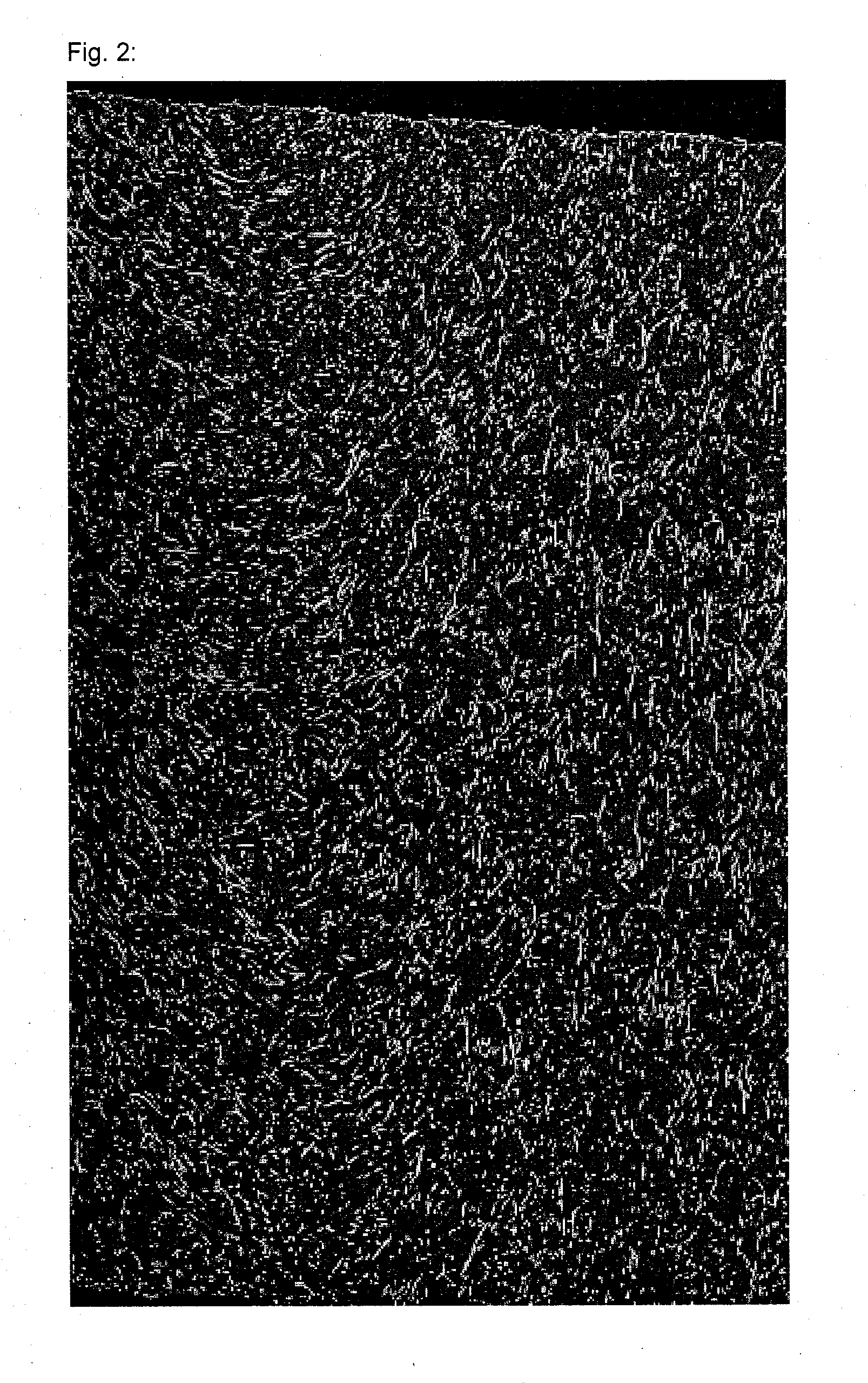Cellulose fibers with an enhanced metering capability, processes for their production and their use to reinforce compound materials
a technology of cellulose fibers and metering capability, which is applied in the field of thermoplastic polymers, can solve the problems of not providing a sufficient reinforcement effect in the compound and being too expensive to produce, and achieve the effects of low throughput, low reinforcement effect and high production cos
- Summary
- Abstract
- Description
- Claims
- Application Information
AI Technical Summary
Benefits of technology
Problems solved by technology
Method used
Image
Examples
example 1
[0033]Standard textile fibers of Lyocell (TENCEL® of Lenzing AG) with an individual fiber titer of 0.9 dtex and a cut length of 38 mm was ground in a cutting mill PSC 5-10 by the Pallmann company, equipped with a sieve with an aperture width of 0.35 mm. The powder obtained comprised fibers with an average diameter of 9 μm and a number-weighted average fiber length of 300 μm. The length-weighted fiber length distribution is shown in FIG. 1
example 2
[0034]Standard textile fibers of Lyocell (TENCEL® of Lenzing AG) with an individual fiber titer of 1.3 dtex and a cut length of 38 mm were ground in a cutting mill PSC 5-10 of the Pallmann Company, equipped with a sieve with an aperture width of 0.35 mm. The powder comprised fibers with an average diameter of 10 μm and a number-weighted average fiber length of 350 μm. The length-weighted fiber length distribution is shown in FIG. 1.
example 3
[0035]Example 2 was repeated but with a sieve with an aperture width of 0.50 mm. The powder obtained contained fibers with an average diameter of 10 μm and a number-weighted average fiber length of 400 μm. The length-weighted fiber length distribution is shown in FIG. 1.
PUM
| Property | Measurement | Unit |
|---|---|---|
| number-weighted average length | aaaaa | aaaaa |
| number-weighted average length | aaaaa | aaaaa |
| number-weighted average length | aaaaa | aaaaa |
Abstract
Description
Claims
Application Information
 Login to View More
Login to View More - R&D
- Intellectual Property
- Life Sciences
- Materials
- Tech Scout
- Unparalleled Data Quality
- Higher Quality Content
- 60% Fewer Hallucinations
Browse by: Latest US Patents, China's latest patents, Technical Efficacy Thesaurus, Application Domain, Technology Topic, Popular Technical Reports.
© 2025 PatSnap. All rights reserved.Legal|Privacy policy|Modern Slavery Act Transparency Statement|Sitemap|About US| Contact US: help@patsnap.com



